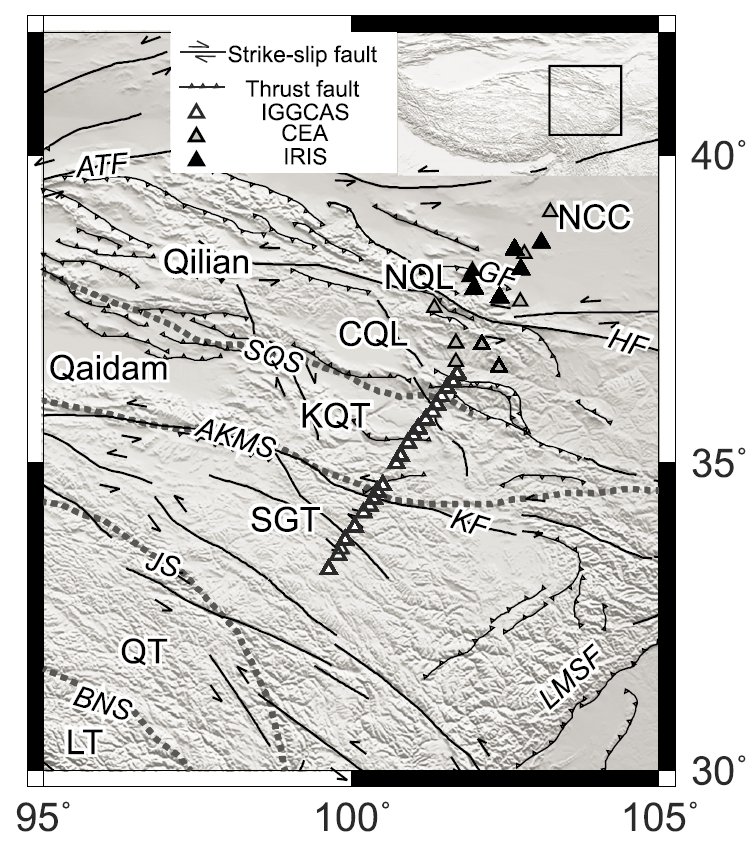As a margin of the vast Tibetan Plateau (TP) far away from the Indian-Asian collision front with devastating earthquakes, the northeast (NE) Tibet has drawn close attention on the mechanism of the plateau uplift and growth after the collision started at about 55 Ma. Various models have been proposed for the deformation and growth mechanism in NE TP, including end-members of continuous deformation, rigid block extrusion, and channel flow in middle-lower crust.
Recently, Dr. DENG Yangfan from Guangzhou Institute of Geochemistry, Chinese Academy of Science, and his collaborators used a recently developed joint inversion scheme to resolve several key seismic parameters simultaneously in a self-consistent manner for a linear array in the northeast margin of the plateau, which is ideal for testing models for the plateau growth.
The main features include the following: crustal LVZs with variable strengths, anomalous Vp/Vs ratios that are correlated with LVZs, large Moho jump across HF and other abrupt changes near major faults, correlation of crustal and mantle velocities, and strong mantle lithosphere anomalies.
The results suggest a lithospheric-scale deformation of continuous shortening as well as localized faulting, which is affected by the strength of the lithosphere blocks. The amplitude and scale of the shear zone may indicate the stage of the lithosphere deformation and delamination as well as its strength. The large mid-crust LVZ in SGT and KQT reflects its longer history of deformation; CQL and NCC are stronger and are in the initial stage of significant deformation. The thickened mantle lithosphere can be removed, which facilitates the formation of middle-lower crustal LVZ and flow. However, such flow is likely a consequence of the deformation rather than a driving force for the outward growth of the TP. The proposed model of TP deformation and growth can reconcile the continuous deformation within the blocks and major faults at the surface, and may be applicable to other parts of the plateau as a possible common mechanism for intracontinental deformation.

Figure 1. Seismic stations (triangles) used in this study with surface topography and geological elements.(Image by DENG Yangfan)

Figure 2. Interpretative illustration for the proposed deformation mechanism in NE Tibet. The color patches outline the lowest velocities in the crust and highest velocities in the mantle from our joint inversion results. The main features include lithosphere blocks (vertical dashed lines with the main fault motions), prominent crustal shear zones (low-velocity zones), mantle lithosphere with traces of residual mantle lithosphere, and delaminated mantle lithosphere .(Image by DENG Yangfan)
Financially support by the Strategic Priority Research Program (B) of the Chinese Academy of Sciences (XDB18000000), the National Science Foundation of China, the study is published in GRL.
Deng, Y.*, Li, J.*, Song, X.*, & Zhu, L. (2018). Joint inversion for lithospheric structures: Implications for the growth and deformation in northeastern Tibetan Plateau. Geophysical Research Letters, 45(9), 3951-3958. https://doi.org/10.1029/2018GL077486
https://agupubs.onlinelibrary.wiley.com/doi/pdf/10.1029/2018GL077486
Contact: Dr. DENG Yangfan yangfandeng@gig.ac.cn